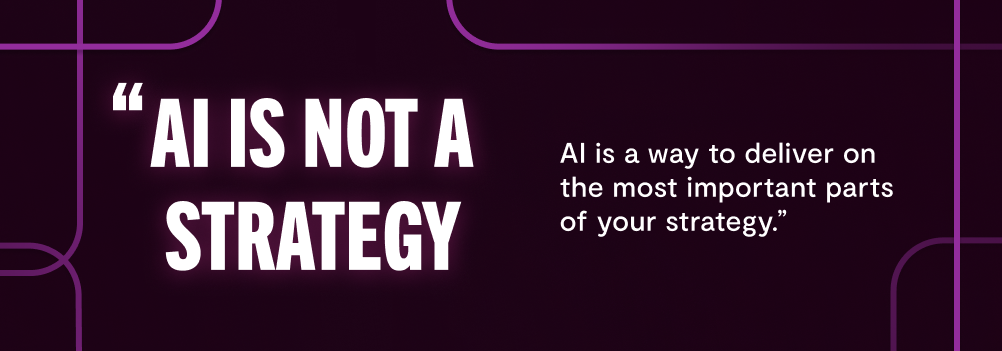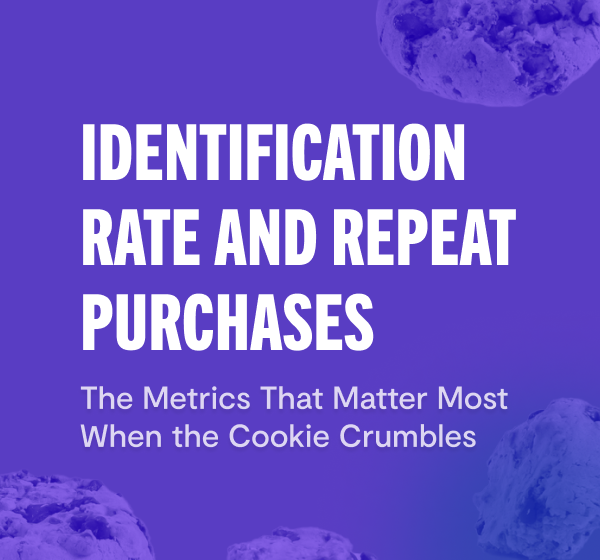

AI is the Future of Retail—Here’s How Retailers Can Seize the Moment
From personalized recommendations to virtual product testing, AI has played an important role in retail for some time now, but in the last few years, it’s taken center stage. Every retailer is now working overtime to unlock this technology’s transformative potential.
This ongoing transformation was the subject of the most recent meeting of the DTC Collective, a community that brings together influential, global voices to realize the potential of digital retail. As their wide-ranging discussion made clear, the potential for AI in retail is indeed limitless. But if retailers fail to keep certain first principles in mind, their AI journey is going to be a lot harder than it needs to be.
Below are three key takeaways from the DTC Collective on how retailers can make the most of AI — without losing valuable time and money along the way.
1. Strategy comes first: establish it well in advance
Paul Tepfenhart, Global Director of Retail & Consumer Strategy & Solutions at Google, put it succinctly: “AI is not a strategy — it is a way to deliver on the most important parts of your strategy.”
What that means is that strategy comes first. If you were building a house, you wouldn’t start by buying construction tools at random. You need a firm plan in place.
That means, to begin with, asking yourself what your pain points are. What precisely it is that you want AI to solve for? It’s equally important to understand that the answer to this question might change given conditions on the ground.
One member of the DTC Collective recalled that their company initially intended to use AI to drive revenue but found it was more valuable for speeding up internal processes. For AI to add value to a business, it’s important to remain aware of what you want out of AI — and to adjust your plan accordingly.
When it comes to generative AI, the hottest topic in the world of AI and retail, this kind of comprehensive strategizing is equally important. GenAI can be great at automating revenue-driving social media campaigns, for instance. But, as some DTC members pointed out, those campaigns can sometimes clash with established brand guidelines, occasionally even churning out “hallucinations,” i.e., inaccurate, sometimes bizarre, off-the-mark outputs. Well in advance of deployment, retailers should be determining how comfortable they are with relinquishing brand identity to AI and establishing the appropriate guardrails
2. Define your goals and metrics
Once your use case is established, you can start to optimize for specific outcomes. Here, too, continual monitoring and adjustment are essential.
One prominent luxury retailer provides an instructive example here. The brand had a strategy in place to use AI to increase revenue, specifically optimizing for conversion. And yet the algorithms they were using didn’t seem to be working. What exactly was the problem?
As it turned out, the algorithm in question was showing the same low-price-point items to every customer. On one level, this was a rational strategy: If you’re optimizing for conversion, it makes sense to surface cheaper products, as a wider range of customers are likely to buy them.
The problem wasn’t that these customers weren’t converting on cheaper products. It was that they could have been converting on more expensive ones. What the retailer realized here was that it made more financial sense to optimize for average order value (AOV), as opposed to sheer conversion — in other words, quality over quantity.
Of course, for another retailer, the very opposite rule might apply. The point is that there is no one-size-fits-all solution. Algorithms need to be tailored to specific shoppers and their specific preferences. Treating all customers the same will always be a mistake.
3. Structure your data for improved insights
Many retailers are currently struggling to properly structure and integrate their data. They have multiple channels bringing in troves of data, but the siloed nature of these channels is leading them to lose out on crucial insights.
Everyone knows that quality data is the lifeblood of AI. But quality data in and of itself can only get you so far. How that data is structured is equally important to any successful AI initiative.
That doesn’t mean retailers need to somehow link up all of their data. The goal, rather, is to think strategically: to unify enough data for the specific use case you’re attempting to execute. Every channel and system gives off valuable insights. By adjusting which of those signals feed into a given model, retailers can work to drive their desired outcome, whether that’s increased purchase frequency, increased AOV, or more cross-category buying.
As Sherene Hilal, Chief Product Officer at Bluecore, put it, “The structure of your data is really the thing that is going to drive value.” That structure, combined with comprehensive strategizing and continual optimizing, is the key to unlocking AI’s transformative potential in retail.
We host DTC Collective events monthly. Learn how to get involved here!




